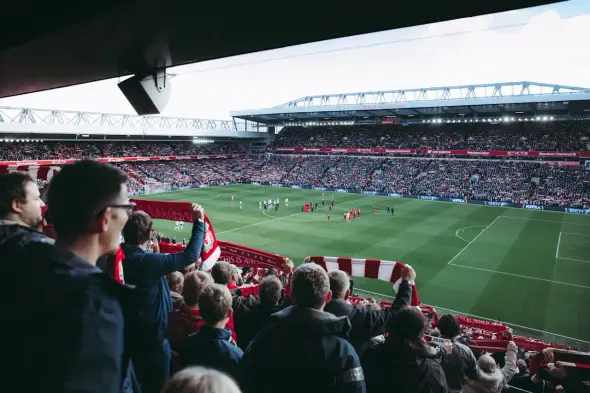How Major Events Drive Property Manager Confidence and Growth for Vacation Rental Businesses

Key Takeaways
Major events are becoming the new seasonality in travel, creating concentrated bursts of demand, higher occupancy and stronger pricing power for vacation rentals year-round.
Confidence among property managers, as reflected in the Hostaway Summer Snapshot Report 2025, stems from preparation — those who plan ahead, price strategically and adopt the right tools see the strongest returns.
You don’t have to be located in a host city to benefit from major events. Properties within 60–180 minutes of key venues can capture overflow bookings and attract travelers seeking quieter, more affordable alternatives.
Technology is the multiplier of success. An AI-driven dynamic pricing, automation and centralized management platform like Hostaway makes it easy to scale operations and maximize profitability during event surges.
The most successful property managers treat events as part of their long-term revenue strategy, using event calendars, analytics and proactive marketing to turn event buzz into a local booking opportunity.
According to the Hostaway Summer Snapshot Report 2025, 61% of property managers feel confident about their business over the next 12 months, with over half (54.5%) expecting further growth in occupancy rates and average daily rates (ADR). This optimism comes despite ongoing economic and political uncertainty and a big part of it stems from property managers looking to cash in on big events, like the 2026 FIFA World Cup which is set to take place across Canada, the United States and Mexico.
For short-term rental hosts, events that generate global buzz and attract die-hard fans from around the world, presents a massive opportunity. With millions of travelers expected to flock to host cities, the World Cup will drive an unprecedented surge in demand for accommodations. From sports fans and media crews to event staff and corporate sponsors, the influx of visitors will ripple far beyond stadium neighborhoods, benefiting regional destinations and secondary markets alike.
So, how can property managers turn such excitement into profit while preparing for this and other events in the years ahead? Let’s break it down.
Why Events Drive Opportunity for Short-Term Rental Property Managers
Events create demand spikes
Did you know, when Taylor Swift announced her 2024 U.S. tour dates, vacation-rental search volume surged 1,400 % for the surrounding days in Miami where she was playing a concert. Meanwhile, the 2024 U.S. solar eclipse was predicted to generate up to $6 billion in economic impact, and rentals in the path of the total-eclipse enjoyed occupancy of 92 % compared with 30% in a typical week.
Events drive pricing power
With a sharp demand spike as generated by a popular event, pricing flexibility improves, allowing property managers to raise rates during these high-demand event windows. This is true even when the broader market is flat or facing headwinds; these micro event windows offer outsized upside.
Events are becoming more important relative to traditional seasonality
Global and local events — from sports tournaments to concerts and music festivals — are becoming a larger driver of travel across the globe. For property managers expecting demand growth, leveraging event-driven strategy gives a concrete mechanism for that confidence to convert into revenue.

What Types of Events Can Vacation Rental Property Managers Capitalize On?
If a property manager is willing, there is not an event type that they can’t leverage to drive occupancy, pricing and ultimately, profits. Here are some key event-categories and what they mean for your vacation rental strategy.
Mega-sporting events
World Cups, the Olympics and other major tournaments such as the NFL, NBA and UFC drive huge visitor numbers, media crews, sponsors and fans.
Pro Tip: You don’t have to be located near a venue or even in the host city to capitalize. Even properties within say 1-3 hours’ drive of a host city can benefit from overflow demand.
Large music tours & festivals
Big acts + festival culture = short-term influxes.
Bookings tend to be very early (soon after dates are announced) and closer to the event date.
Cultural & major local events
Think: Major city festivals, conventions, food/wine expos, art biennales. These types of events often take place more frequently and tend to attract more predictable bookers than mega-sporting and -music events.
Natural-phenomena / unique one-offs
These range from solar eclipses and rare meteor showers to even large pilgrimages and attract travelers en masse, but may not be infrastructure-heavy.
Business / industry conventions
Some cities build their entire tourism infrastructure around business travelers as large conferences and trade shows can fill rooms and rentals.
Spill-over / secondary-market demand
When the main host area is saturated or very expensive, travelers will look to nearby towns, suburbs or regions within driving distance. Fast and accessible public transport can drive visitors to book even further.
Event Type | Examples | Why It Matters | Pro Tip |
Mega-Sporting Events | FIFA World Cup, Olympics, NFL, NBA, UFC | Draw massive global audiences, media, and sponsors — extended stays and group bookings are common. | Even properties 1–3 hours away can benefit from overflow demand. |
Music Tours & Festivals | Coachella, Lollapalooza, Primavera Sound | Create short, intense bursts of bookings as fans travel for multi-day experiences. | Update rates early when artists announce tours — fans book immediately. |
Cultural & Local Events | Food & wine expos, art biennales, film festivals | Occur regularly and attract repeat or predictable travelers. | Offer local guides or experiences to stand out from competitors. |
Natural Phenomena / Pilgrimages | Solar eclipses, meteor showers, religious gatherings | Drive travel to nontraditional destinations, boosting off-season occupancy. | Create packages that emphasize location advantages and accessibility. |
Business / Industry Conventions | Trade shows, expos, summits | Fill city and regional accommodations during weekdays. | Target business travelers with flexible cancellation and Wi-Fi emphasis. |
Secondary-Market Demand | Suburban and nearby towns | Overflow and cost-conscious travelers fuel bookings beyond the host city. | Highlight ease of commute and affordability in your listing. |
Why Property Managers Don’t Have to Be In the Host City to Benefit from Events
Many hosts assume their properties need to be located really close to the event venue or at least in the town or city that is hosting it, to capture event demand. That’s not always true.
Here’s how you can benefit even if your property is located outside the immediate radius of the event:
Overflow stay demand
During major events, the host city often hits capacity forcing guests to look nearby. Secondary locations within reasonable travel/commute distance can see increased bookings and rates.
Cost/comfort trade-off for travelers
Some visitors prefer staying just outside the main hub for lower cost, easier parking/amenities and less crowds. Your property may become an attractive alternative.
Extended-stay & pre/post event travelers
Some guests stay days before or after the main event, and may prefer more relaxed locations.
Marketing to “event-adjacent” travelers
For example, fans who want to attend one match or day of a tournament, or local festival goers who want quieter accommodations outside the crowds. Use keyword phrases like “X min from [host city] stadium”, “Easy drive to event zone” to target.
Ripple-effect demand
Often, major events boost regional (and even national) tourism overall as the city, county, state or nation is blitzed on to the global stage as an attractive travel destination.
Key takeaways for property managers
Action Step | What to Do | Why It Matters |
1. Build an events calendar | Track major upcoming events within your region and nearby areas (60–180 minutes away), including sports, music, festivals and conventions. | Helps you plan ahead, anticipate demand spikes and identify new opportunities for higher occupancy and rates. |
2. Simulate demand early | When an event is announced, analyze typical rates, availability and overflow potential into secondary markets. | Enables data-driven pricing and strategic decision-making before competitors react. |
3. Adjust pricing and policies | Update rates, minimum stays and cancellation terms ahead of high-demand periods. | Maximizes revenue and ensures flexibility while maintaining competitiveness during event surges. |
4. Refresh your listing and marketing | Highlight proximity, parking, transport links and position your property as a “quiet alternative” if outside the host city. | Enhances visibility in event-related searches and appeals to travelers seeking convenient, comfortable stays. |
5. Scale your operations | Prepare for increased turnover by adding cleaning capacity, improving guest communication and ensuring local mobility info is up to date. | Maintains guest satisfaction and efficiency when managing multiple check-ins during peak times. |
6. Monitor post-event booking trends | Track occupancy and extend stays by offering small incentives for 2–3 night add-ons or “stay and explore” packages. | Captures residual demand after events and turns one-time guests into longer-stay visitors. |
How to Capitalize on Events to Drive Demand and Profits to Your Vacation Rental
1. Leverage the “event effect” in your forecasting
Global events like the FIFA World Cup tend to push booking windows further out. Many fans plan their trips months, and even a year, in advance. To capture this demand early:
Start optimizing your pricing now. Use dynamic pricing tools (already adopted by 62% of operators, per Hostaway data) to capture early demand while maintaining flexibility closer to the event.
Analyze booking trends from past major events (like the Olympics or Super Bowl to understand rate behavior and occupancy patterns. Adjust your minimum stay and cancellation policies accordingly.
Build an events calendar for your region and surrounding regions (60–180 minutes away) and mark major upcoming events.
When an event is announced, simulate demand: Review typical rates, assess supply constraints and evaluate overflow potential into secondary markets.
Adjust early and strategically. Update your pricing, minimum stay requirements and cancellation policy ahead of surges rather than reacting to them last-minute.
Update your listing copy and marketing. Highlight proximity, transport links, parking or describe your rental as a “quiet alternative” if you’re outside a host city.
Plan for post-event stays. Many guests extend trips after major events to make the most of their travel. Offer flexible options and “stay-and-explore” packages to capture those additional nights.
If your market is within driving distance of a host city — think Philadelphia, Vancouver or Guadalajara in the case of the 2026 FIFA World Cup — don’t underestimate spillover demand. Fans often prefer quieter or more affordable stays outside major hubs.
2. Upgrade guest experience because reviews will matter more than ever
As revealed in the 2025 Summer Snapshot report, property condition and cleanliness tops the list of guest complaints in 2025, and property maintenance is the leading operational challenge. During major events, when guest expectations rise and competition for top-rated listings intensifies, even a few negative reviews can have lasting impact.
To prepare:
Audit your property maintenance plan — from HVAC systems to linens and appliances.
Invest in home automation and smart locks to streamline check-ins and security, technologies already used by nearly half (46%) of professional operators.
Build event-ready guest guides with transportation tips, fan zones and local attractions. A personal touch can turn a one-time visitor into a loyal guest.
3. Boost visibility with tailored marketing
Major global events like the FIFA World Cup are more than just a sports event (or concert or festival) – they’re a global tourism catalyst. Here’s how to position your vacation rental for visibility and direct-booking growth:
Add event-related keywords like “World Cup rental,” “near stadium,” or “fan accommodation” in your listing titles and descriptions (but avoid keyword stuffing).
Use social media to target international travelers planning trips months ahead. Facebook and Instagram ads can reach fans planning trips from abroad.
Build direct booking funnels — 37.5% of property managers in 2025 generated more direct bookings than the previous year. By capturing leads on your website, social media and other owned channels, you’ll reduce reliance on OTAs and maximize profits.
4. Embrace AI and automation to scale operations
AI adoption in the vacation rental industry jumped from 60% in 2024 to 84% in 2025, making it the most significant operational change year over year. For event periods, automation is your secret weapon:
Use automated guest messaging or AI chatbots to handle repetitive inquiries and speed up guest responses
Let AI-driven dynamic pricing tools adjust your rates automatically as demand spikes.
Deploy predictive analytics to forecast staffing, cleaning capacity and marketing spend leading up to event months.
Ensure operational scalability by having extra cleaning teams, staff on deck 24/7 and local transport info ready to handle surges smoothly.
5. Build a playbook for future events
The World Cup is only the beginning. The 2028 Summer Olympics in Los Angeles, Formula 1 Grand Prix expansions and major music festivals like Coachella, Lollapalooza and Glastonbury — all create recurring opportunities for hosts.
To capitalize long-term:
Build event calendars and integrate them into your property management strategy.
Track travel trends, flight data and hotel occupancy forecasts to anticipate demand early.
Collaborate with local tourism boards or event organizers for early insights and visibility.
Monitor post-event booking patterns. Some travelers will extend their stay — incentivize 2- or 3-night add-ons through discounts or value-adds like local tours or flexible check-out.

Confidence Backed by Strategy
The Hostaway 2025 Summer Snapshot Report shows that optimism among property managers isn’t unfounded — it’s strategic. Operators are using technology, automation and smart marketing to prepare for what’s next. After all, confidence comes from optimizing what you can control, and being ready for what’s coming.
For those who plan ahead, the FIFA World Cup 2026 and other events can be more than a momentary surge; they can serve as catalysts for multi-year revenue growth and operational maturity. And with the right platform, it’s easier than ever to seize those moments.
Hostaway’s all-in-one vacation rental software helps property managers capitalize on event-driven demand by:
Centralizing event-time operations: Manage all your listings, calendars and guest communication across Airbnb, Vrbo, Booking.com and other channels, so you can handle high booking volumes without losing track of guest details.
Optimizing rates dynamically: Hostaway Dynamic Pricing automatically adjusts nightly rates as event dates approach, ensuring you never underprice during peak demand.
Automating guest communication: Schedule messages, send local event info and customize templates so every guest feels informed and cared for — even when you’re managing multiple check-ins a day.
Analyzing performance with insights dashboards: Track booking trends, ADR and occupancy across properties to understand which events drive the biggest revenue lift, and refine your strategy for the next one.
Boosting direct bookings: Use Hostaway’s integrated website builder and direct booking engine to promote your properties with SEO-optimized content and event-related offers and take bookings that are updated in your calendar, helping you capture more direct traffic and reduce OTA fees.
By combining technology with foresight, property managers can go beyond reacting to demand — they can predict and prepare for it. With Hostaway, that confidence becomes actionable, scalable and measurable, setting operators up not just for a great 2026, but for sustainable growth well into the future.
FAQs
Why are major events like the 2026 FIFA World Cup important for vacation rental property managers?
Major events generate extraordinary demand for accommodations. The 2026 FIFA World Cup, hosted across Canada, the U.S. and Mexico, is expected to attract millions of visitors. Events like these create spikes in bookings, higher average daily rates (ADR) and extended stays that ripple across host and nearby cities.
Do I have to own a property in a host city to benefit from big events?
Not necessarily. Properties within one to three hours’ drive of major venues often see strong overflow demand when host cities reach capacity or become too expensive. Travelers seeking lower prices, quieter stays or easier parking look to secondary markets. These nearby locations can outperform city-center listings during major events, especially when hosts highlight proximity, easy transport access and unique amenities.
How far in advance should I prepare for a major event?
Ideally, 12–18 months in advance. Fans, crews and sponsors often book early, especially for global tournaments or multi-day festivals. Use this time to refresh listings with event-specific details, partner with local tourism boards or event organizers for exposure and build SEO content on your direct booking site to rank for event-related searches.
Can smaller local events really make a difference in occupancy?
Absolutely. Even smaller-scale regional festivals, food markets or conferences can boost occupancy and revenue, particularly during off-season months. The cumulative effect of several small events throughout the year can rival the impact of one major global event, offering a steadier revenue stream and less volatility.
How can I measure the success of my event strategy?
Use Hostaway’s analytics dashboards to monitor changes in occupancy rate and ADR during event windows, direct booking conversions from campaigns or SEO content and guest satisfaction scores and repeat bookings post-event. Compare event periods year-over-year to see which categories (sports, concerts, conventions) drive the best ROI, and refine your calendar accordingly.
Ready to find out how Hostaway can transform your business?
